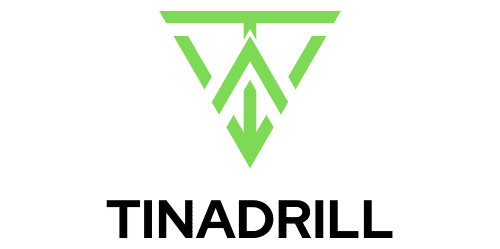What’s the Impact of AI on Personalized Learning Plans for Dyscalculia?

In the past, traditional educational methods often struggled to cater for students with dyscalculia, a learning disability that affects numerical understanding and mathematical skills. However, the advent of digital technology and artificial intelligence (AI) has significantly broadened the landscape of educational resources.
AI has the potential to revolutionize education for students with dyscalculia by providing personalized learning plans. This article will delve into how AI, and in particular chatbots like ChatGPT, can support education for students with dyscalculia and explore the opportunities this technology presents for these individuals.
En parallèle : Can Smart Fabric Sensors Detect Posture and Aid in Corrective Therapy?
The Role of AI in Personalized Learning for Students with Dyscalculia
Education has evolved significantly with digital technology, and AI applications now facilitate a more individualized approach to learning. This personalized aspect is particularly beneficial for students with disabilities, who often require a different approach to conventional educational methods.
AI offers a world of possibilities to students with dyscalculia. It is designed to support these individuals by identifying their specific learning needs, assessing their performance, and adjusting educational content to their progress.
A lire aussi : How Is Edge AI Being Used to Process Data in Autonomous Delivery Vehicles?
One major advantage of AI is its ability to adapt to a student’s learning pace. It can provide additional support where necessary, allowing students to develop their skills at a comfortable pace. This kind of personalized approach offers a unique learning opportunity that wouldn’t be possible using traditional teaching methods.
ChatGPT as an Educational Tool for Dyscalculia
ChatGPT, an AI chatbot, is a prime example of how technology can aid students with dyscalculia. With its ability to converse in a natural, human-like manner, ChatGPT serves as an incredible educational tool, providing instant, tailored responses to students’ queries.
This chatbot can provide step-by-step guidance through mathematical problems, enhancing students’ understanding and developing their problem-solving skills. Its ability to provide instant feedback and adjust its responses based on the student’s proficiency level makes learning a more interactive experience.
ChatGPT’s conversational learning approach may also help to alleviate the frustration and anxiety often associated with dyscalculia. This empathetic interface, coupled with the potential for consistent improvement, makes ChatGPT a valuable tool in the realm of personalized education.
Teacher’s Role in Leveraging AI for Dyscalculia
While AI can offer significant support for students with dyscalculia, the role of teachers in this process is crucial. Teachers are instrumental in overseeing the implementation of these digital tools in the classroom and ensuring that students are using them effectively.
They can provide the human touch that AI cannot replicate, such as emotional support, empathy, and motivation. Moreover, teachers can also use AI as a tool for assessment, tracking students’ progress, and identifying areas where additional support might be necessary.
Teachers need to be well-versed in the functionality of these AI tools to effectively incorporate them into their teaching strategies. Professional development opportunities revolving around digital technology and AI in education can equip teachers with the necessary skills and knowledge.
The Future of AI in Dyscalculia Education
With the rapid advancements in technology, the future holds immense potential for the use of AI in education, particularly for students with dyscalculia. AI has the potential to make personalized learning more accessible, supporting the individual learning needs of each student more effectively than ever before.
The continued development and integration of AI tools like ChatGPT in the classroom could revolutionize the educational landscape for students with dyscalculia. The ability of these tools to consistently adapt to a student’s learning pace and style offers a unique learning opportunity that could fundamentally transform dyscalculia education.
While the current landscape of AI in dyscalculia education is promising, it is just the tip of the iceberg when considering the vast possibilities that the future might hold. Continuous research and development in this field will undoubtedly pave the way for more sophisticated, effective AI tools that will open up even more opportunities for personalized learning.
Augmented Reality in Dyscalculia Education
In the quest to improve learning experiences for students with dyscalculia, another cutting-edge technology comes into play, augmented reality (AR). This advanced technology, combined with AI, offers a multi-sensory, interactive learning experience that can enhance comprehension and retention of mathematical concepts.
Augmented reality enables the creation of an immersive learning environment where complex mathematical problems and scenarios can be visualized in a more tangible and engaging way. Students can interact with these scenarios, manipulating numbers and equations in a virtual space, which can help to solidify their understanding.
For instance, imagine a student struggling to understand the concept of fractions. Augmented reality can visually represent the fractions, breaking a whole into smaller, understandable parts, and allowing the student to interact with them. This hands-on approach fosters a deeper understanding and makes learning fun, thus reducing the anxiety and frustration often associated with dyscalculia.
While AR holds great potential as an assistive technology in dyscalculia education, its effective use hinges on the guidance of teachers. Like AI, teachers need to be adept in the use of AR to seamlessly incorporate it into their teaching strategies and ensure that students get the maximum benefit from this technology.
Conclusion: A Step Towards Effective Equitable Education
In conclusion, the integration of AI, encompassing digital tools like ChatGPT, and augmented reality, represents a beacon of hope for students with dyscalculia. These technologies provide a level of personalized learning that addresses learning difficulties while enhancing students’ mathematical skills in an engaging and interactive way.
However, it’s important not to overlook the crucial role of teachers in this digital revolution. While AI and AR offer numerous benefits, they are not standalone solutions. Teachers’ understanding and effective use of these technologies can significantly enhance their potential, leading to more meaningful and effective equitable education for students with learning disabilities.
The future of dyscalculia education appears promising with the continuous advancements in AI and related technologies. As research and development in this field progress, more sophisticated, effective, and user-friendly tools will come to light, further enhancing the learning experiences for students with dyscalculia. The opportunities and guidelines presented by AI and AR are paving the way for a learning environment where every child, regardless of their learning disability, can thrive.
